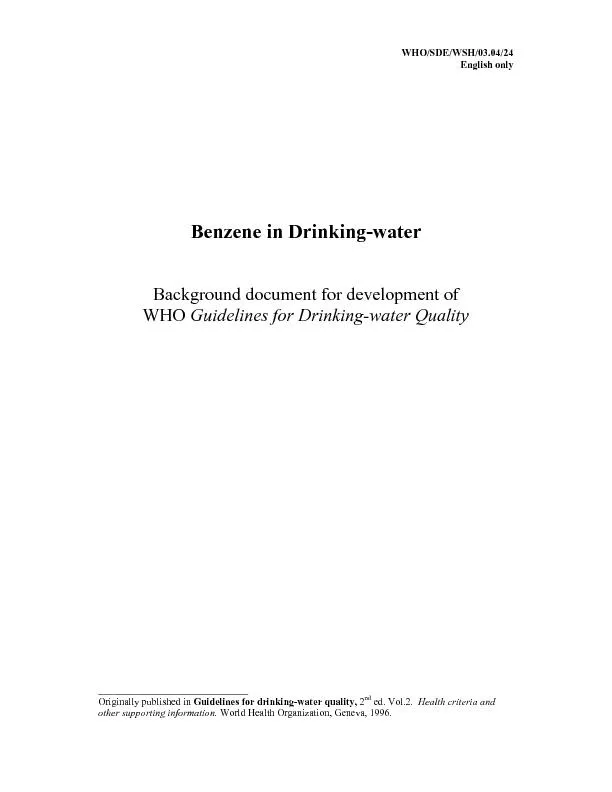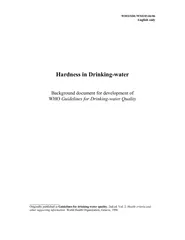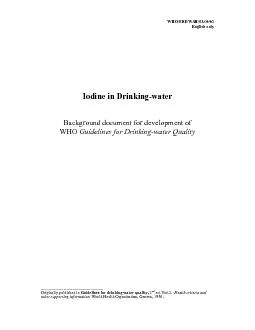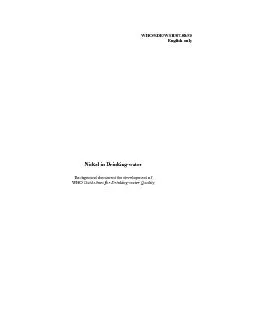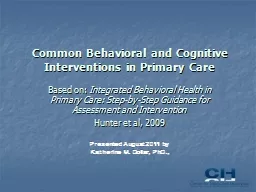PDF-PrefaceOne of the primary goals of WHO and its member states is that
Author : myesha-ticknor | Published Date : 2016-10-15
e International Chemical Assessment Documents theInternational Agency for Research on Cancer the joint FAOWHO Meetings onPesticide Residues and the joint FAOWHO
Presentation Embed Code
Download Presentation
Download Presentation The PPT/PDF document "PrefaceOne of the primary goals of WHO a..." is the property of its rightful owner. Permission is granted to download and print the materials on this website for personal, non-commercial use only, and to display it on your personal computer provided you do not modify the materials and that you retain all copyright notices contained in the materials. By downloading content from our website, you accept the terms of this agreement.
PrefaceOne of the primary goals of WHO and its member states is that : Transcript
Download Rules Of Document
"PrefaceOne of the primary goals of WHO and its member states is that "The content belongs to its owner. You may download and print it for personal use, without modification, and keep all copyright notices. By downloading, you agree to these terms.
Related Documents

